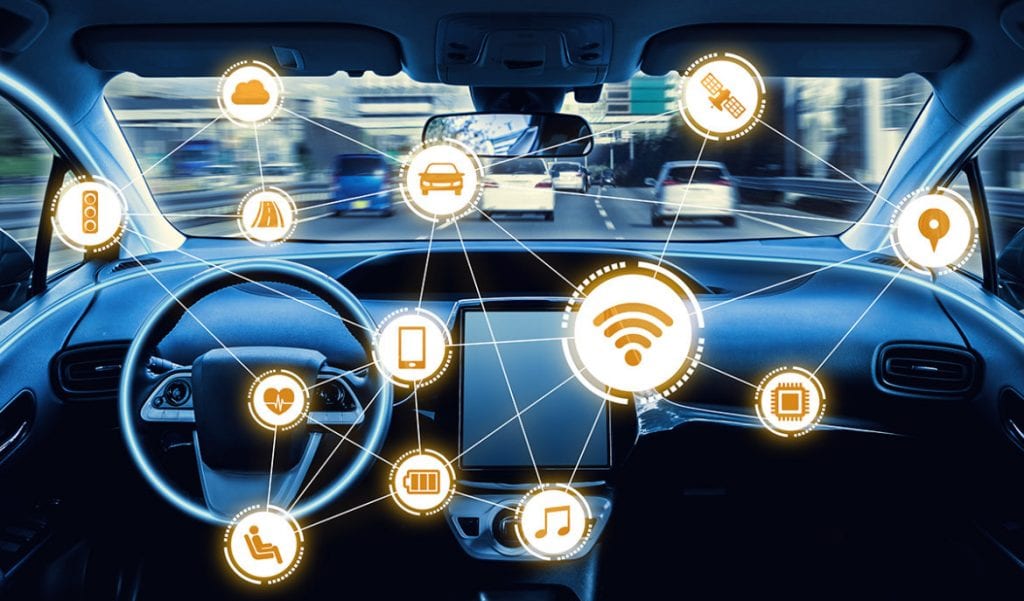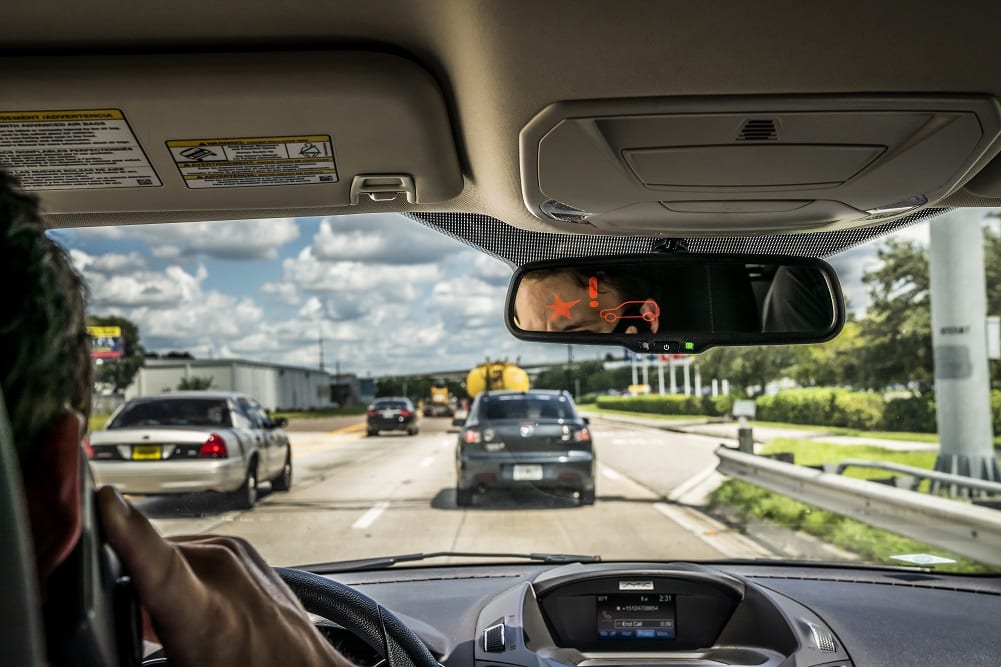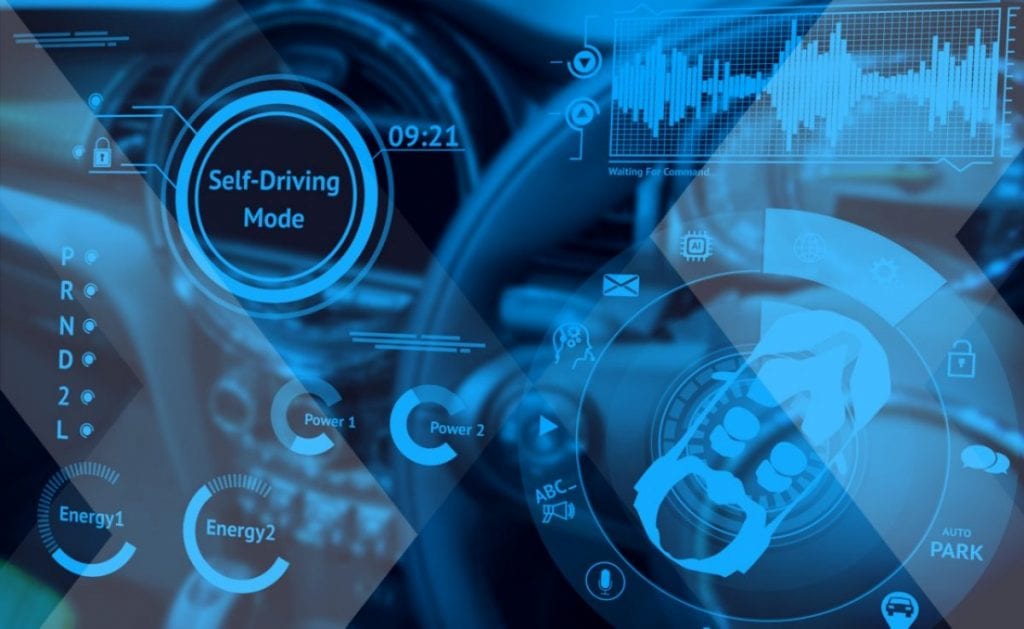
Until the passenger elevator became fully automated around 1970, the notion of riding in such a compact enclosure without an attendant was unthinkable. To date, our user experience with elevators has not changed dramatically (it still has its ups and downs). What has changed is our relative comfort level with technology in general.
For example, were elevators to add computer vision and machine learning to determine how many passengers were waiting on a given floor and control the arrival rate at each floor (including up-peak and down-peak times), the elevator’s UI/UX would instill greater confidence and expediency.
Today, a similar sentiment applies to autonomous vehicle technology. We can hardly imagine what driverless transportation will mean for the way we live and work. We are all in desperate need of a “test drive.”

The arrival of this new form of transportation won’t occur the same way it did for cell phones or computers, immediately accessible across the country at the same time. Rather, as several studies have affirmed, the adoption of an autonomous transportation system will arrive on a market-by-market, metro-by-metro basis in what could be defined as “islands of autonomy.”
For both businesses and consumers to benefit from what is projected to be a multi-trillion market for autonomous vehicles and mobility as a service (AV-MaaS), the future requires a new way of thinking. The analytics are not simply a question of GDP per capita or a family of four with two kids and a dog. Our planning needs to account for trip missions, origins and destinations, travel duration, miles, occupancy, and velocity on each island.
An island like the city of Seattle has its own commuter needs and requirements that are different from other autonomous islands and suggest a unique mix of vehicles by type and occupancy. After the first wave of autonomous vehicles arrives in the form of coordinated, route-specific services, the next wave is the autonomous vehicle that is parked in your driveway or in your neighborhood carpool. We all are being given a Learner’s Permit for “Driverless Ed.”
To provide our readers the inside track on how to think about, plan, test and ultimately implement the adoption of autonomous vehicles in our region, we asked two Seattle experts:
Loreana Marciante, PMP, is the Senior Emerging Mobility Solutions Engineer at HNTB Corporation. She has nearly two decades of experience in the urban built environment — at the intersection of transportation innovation and sustainable development. Recently, Loreana was the Sustainable Transportation Lead within the Paul G. Allen philanthropic portfolio, overseeing the Smart City Challenge initiative, a $50 million partnership with the U.S. Department of Transportation.
Jim Barbaresso is a Senior Vice President and National Practice Leader of Intelligent Transportation and Emerging Mobility Solutions at HNTB Corporation. He has more than four decades of industry experience and has worked with transportation clients across the country. Jim has been involved in a growing number of projects related to the national initiative for connected and automated vehicles.
Seattle24x7: How soon will autonomous vehicles (AVs) become integrated into our roads and highways?

Marciante: Nationally, autonomous vehicles have already begun integrating into our roads and highways, with AV shuttle projects successfully launching in the states of Michigan, Ohio, Florida, Texas, Nevada and California. We anticipate our region will be eager to adopt them as well. The city of Seattle is proceeding with caution toward AV technology. On the Eastside, the city of Kirkland hosted Google AV testing in 2016 and there are multiple pilot concepts currently being considered by cities, transit agencies and private sector groups.
Barbaresso: Current AV shuttle projects are small, often Level 3 systems, and the vehicles generally have safety attendants on board. The shuttle buses run in confined geographical areas, with routes generally being two or three miles in length. Their speed is limited, as the buses travel no faster than 25 miles per hour. Yet these projects are stepping stones toward the future of ground transportation, both locally and nationally. Almost six in 10 Americans polled in the HNTB America THINKS survey believe autonomous vehicles will be commonplace within the next decade.
Developments continue to emerge within the AV industry. Experts continue to learn more about the capabilities of autonomous vehicles and connected-vehicle technologies, and they continue applying that knowledge to advance those technologies and further drive innovation.
Seattle24x7: What will autonomous vehicles on our roads look like? Does HNTB envision that all routes and roads will need to become accessible for AVs or connected vehicles (CVs) or do you expect this will be integrated gradually?

Barbaresso: Autonomous and connected vehicles will be a gradual integration. Adoption will be driven by consumer needs and business cases. For example, we will likely see ride-hailing services and first- or last-mile services using AVs within the next few years in certain geographic markets. On highways, we will also see automated trucks.
A 2019 KMPG Global Automotive Executive Survey of leading automotive executives showed 84 percent of global respondents expect autonomous vehicles will be introduced in “islands of autonomy.” These “islands” will likely emerge first in metro markets that feature a unique blend of consumer living, working and travel patterns. When introduced, an AV will simply be another vehicle on the road, albeit a vehicle different in shape and design. It may look more like a toaster.

Road changes to accommodate AVs may be modest and can include adequately striping lanes on roads that AVs can detect or adding devices to traffic light signals for AVs to better determine their road position and traffic-signal phasing. Once AV technology further evolves and as their numbers grow, AVs may have their own designated lanes on highways.
Marciante: As autonomous capabilities evolve and demand rises for autonomous vehicles, so will its advancement outside of those market areas. AV deployment in the greater Seattle region may begin with a partnership between the private and public sectors to demonstrate AV commuting. The city of Bellevue, in collaboration with the ACES Northwest Network, has developed a concept for a network of vans along the I-405 corridors that could be autonomous. In Seattle, self-driving vans can be deployed to help shuttle commuters to light rail stations or local ferries or help connect communities with limited access to private automobiles.
Seattle24x7: Regarding the type of AV/CV, do you have any insight into whether we’ll see AV trucks on the road before cars? Do you know if there is a similar timeline for AV trucks compared to cars?
Barbaresso: Commercial automated trucks have been tested on our highways since the famous “beer run” on I-25 in Colorado in 2016. Truck manufacturers, like Volvo, have developed AV prototypes, and startups, like Starsky Robotics, have successfully retrofitted trucks with sensor arrays and communications for remote operation. Truck platoon technology that enables trucks to follow each other very closely has also been tested in various locations. Many states, such as Michigan and Florida, have changed their laws to allow truck platooning. The Michigan DOT worked with the U.S. Army to demonstrate automated truck platoon technology on I-69, and Peloton Technology has demonstrated fuel savings on multiple truck platoon pilots.
When you consider the business case, especially given today’s shortage of truck drivers, AV trucks make a great deal of sense. Fuel and safety benefits are possible. Adoption will take place first in more controlled environments, such as Interstate Highways or even on exclusive lanes on highway facilities. However, it is likely many years before we see completely autonomous trucks on our highways.

Seattle24x7: How will AVs/CVs enhance mobility? Do you expect it will cause an increase in ridesharing?
Barbaresso: Autonomous vehicles can enhance mobility in several ways. AVs will allow more effective management of traffic flow and roadway congestion. A study funded by the National Science Foundation found that autonomous vehicles dissipate stop-and-go waves so that traffic doesn’t fluctuate as it does when all of the cars on the road are driven by humans. By simply introducing AVs, traffic flow is improved.
AVs will also increase road safety by reducing accidents. A study from the U.S. Department of Transportation’s National Highway Traffic Safety Administration found that 94 percent of road accidents are caused by human error. The advanced technology afforded by high-tech maps, cameras and sensors will provide enhanced monitoring of the vehicle’s surroundings and prevent common driver errors from occurring.
Ridesharing and vehicle-sharing will likely increase in an AV environment. The cost of owning or using an AV can be spread across more rides, more time and more riders. Consider that most vehicles are idle much of the day. In an AV environment, this no longer needs to be the case.
Seattle24x7: What are the most recent developments in the area of intelligent transportation systems for AVs? What impact does HNTB anticipate they’ll have on commute times, safety and the environment?
Barbaresso: Many AVs are equipped with the latest cameras, sensors and GPS antennas to monitor an autonomous vehicle’s surroundings. AVs are also furnished with LiDAR, or light detection and ranging sensors that use pulses of rapid light to map the surrounding area of a vehicle in 360 degrees. Vehicle-to-Infrastructure (V2I), vehicle-to-vehicle (V2V) and vehicle-to-everything (V2X) communications are advancing rapidly. These technologies will enable situational awareness for vehicle safety applications, but also provide capabilities needed to harmonize traffic flow and reduce emissions.
The application of artificial intelligence and machine learning also will be important for advancing AVs. Think about how many different driving scenarios you encounter each day. AVs must be able to “read and react” to these scenarios, much like a human does, to navigate our streets and highways.
All these features will only contribute to AVs improving commute times, reducing collisions and ensuring the safety of commuters, passengers and pedestrians.

Seattle24x7: What are the biggest challenges facing the advancement of autonomous vehicle technology and its implementation?
Marciante: A significant hurdle is developing technology that is sufficiently advanced to perform consistently throughout the various conditions a driver encounters on the road. Adverse weather conditions like the rain we experience in Seattle, fog and snow inhibit the abilities of AV sensors. Discerning pedestrians from other moving objects or even parked cars can prove difficult for AVs in urban areas with high traffic and congestion. AVs encounter difficulty with turning left in front of oncoming traffic. Machine learning is unable to pick up the non-verbal cues from pedestrians and other drivers, such as eye contact and hand signals that help drivers communicate and navigate their way through traffic.
Barbaresso: Another significant hurdle to overcome is consumer trust. Our recent America THINKS Survey indicated that 54 percent of the respondents would not ride in an AV and 61 percent do not think they are safer than human-driven vehicles. An overwhelming 91 percent believe autonomous vehicles should be required to have a person on board who could override the automation in the event of an emergency. The level of trust will increase as the technology matures, but it will also require consumer education.
Also, AV regulations vary by state, creating a regulatory patchwork. Should the U.S. become ready to implement AV technology on a national level, uniform regulations would need to be in place.
Despite these hurdles, developers maintain that AVs can be a significantly safer option for commuters than human-operated vehicles and continue testing ways to advance this technology.

Seattle24x7: What are the biggest concerns you encounter from critics of AV technology? How do you address those criticisms?
Barbaresso: The biggest concern we encounter is a reluctance to trust a self-driving car. Many people are hesitant to relinquish control of their vehicle, and rightfully so. This requires a significant amount of trust that an autonomous vehicle will not fail, which can only develop over time and experience with this technology.
Other concerns we encounter have to do with liability in the event of a collision and cybersecurity. By removing a human driver, many questions surface regarding who’s responsible should an accident occur, and car insurance regulations will have to be significantly reworked to address this. Cybersecurity is a big concern because AVs could be vulnerable to hackers and the car’s movements can be monitored.
There are also concerns around the cost of updating infrastructure to be AV accessible and properly funding an AV transit system. The good news is programs have been created to invest in cities promoting the advancement of these technologies for city operations.
Seattle24x7: How are regional transportation agencies currently preparing for autonomous vehicles?
Marciante: Regional transportation agencies are preparing for autonomous vehicles by setting in motion plans to develop integrated mobility systems. Since there is much uncertainty around how long it will take for AVs to be fully deployed and how they will affect urban, suburban and rural areas, the approach to planning for AVs requires a great deal of agility and flexibility. Planners must factor in a range of possible scenarios that allow, when ready, the introduction of autonomous vehicles while also supporting community goals and objectives.
These agencies work toward ensuring that regulations, standards and incentives are established and in place, site design and development is secured, and there is an adequate investment in public infrastructure and facilities.

Seattle24x7: What should cities – like Seattle – be doing to prepare for AV technology? How should potential users prepare?
Marciante:: The first step to preparing for emerging transportation technologies, including AVs, is to have clearly defined and measurable “smart” goals. This framework helps align private sector technology deployments to public sector priorities. Further, cities like Seattle that are on a pathway to become a smart city must develop data standards and the supporting infrastructure that will enable public agencies to communicate with automated vehicles. The most efficient transportation system can be achieved when transportation agencies orchestrate and harmonize the entire network.
Cities should also take inventory of the technology they already have in place – be it cameras, sensors or GPS devices – and determine how it can be utilized in a smart city program. Other foundational elements include having a robust communications network for data transmission, a solid data management platform for analysis to support decision-making and to create the information that will empower citizens, and a redundant electrical grid to prepare for growth in electric vehicles. City officials must also engage residents in community forums and on social media to garner feedback on what initiatives matter most to them and how technology can make their lives easier.
For residents interested in the implementation of AV technology, it’s important to communicate this to your elected officials and lobby for your city to adopt initiatives to adequately prepare for automated vehicles.

Seattle24x7: Do you anticipate a sizable appetite to use these vehicles? How quickly do you expect AVs will reach critical mass and then overtake non-AV transportation?
Barbaresso: Once AV technology is fully developed and people see that it works, it is effective and it is safe to use, there will absolutely be an appetite. AVs will eliminate mobility hurdles for non-drivers, but will also generate other mobility and safety benefits that will drive adoption.
However, because AVs will be introduced in gradual phases, the rate of adoption among consumers will also likely be gradual – in part due to factors such as technological maturity, cost and consumer trust.
In mass transit and rideshare instances, we may see AVs reach critical mass first, but that crossover point is still a long time away. Market saturation is likely several decades away. [24×7]




















